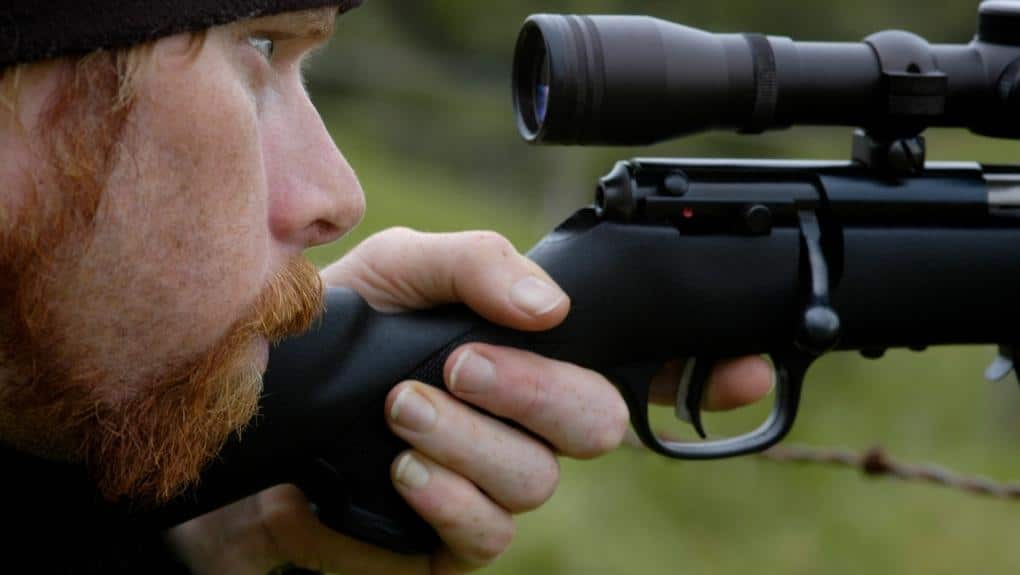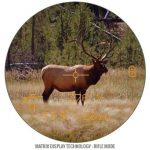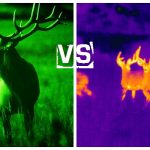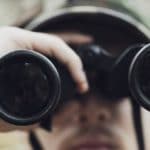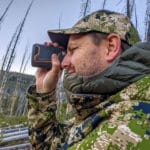So you’re wondering if you need to fork out the change before a hunt and buy a rangefinder or if you can squeak by without one? Here is how to judge distance without a rangefinder and when it makes sense to do so.
There are many reasons you might want to learn how to judge distance, aka range, without using a rangefinder.
- You don’t want to spend the extra money on a rangefinder.
- Rangefinders are not allowed in your hunting area.
- You want to learn how to eyeball your shots without relying on additional equipment.
One of the first questions I always get when shooting any distance without using a rangefinder is: “Can you accurately determine the distance of a target without a rangefinder?”
Learning how to range your targets without a rangefinder is a viable way of determining distance. There are simple equations that can be done using your rifle scope to determine the distance to your target. There are also several other methods to help you accurately range your target.
In this article, we cover five of our favorite ways to range without using a range finder.
How to Determine Distance Without a Rangefinder
1. Equations
If you’re looking through a rifle scope, two simple formulas help you determine distance without a rangefinder.
This method is effective out to 800 yards, but it requires a relative knowledge of the size of your target.
You will need to know:
- The size of your target
- Your MOA reticle measurement
Or
- Size of your target
- Mils reticle measurement
The Equation
MOA (minute of angle)
Target Size (Inches) X 95.5
______________________ = Distance to Target (Yards)
MOA Reticle Measurement
MRAD (Milradians)
Target Size(Inches) X 27.77
______________________ = Distance to Target (Yards)
Mil Reticle Measurement
If you’re like me, this is too much math. While it’s great on a range or for long-distance shots where doing some quick math on your calculator app won’t spook your quarry, it’s far from ideal when the pressure is on.
Related: How to Range a Distance with Only Your Riflescope
2. Markers
If you are hunting over a food plot, or long field, setting up markers at certain distances can help you range to target.
One of the most popular methods is colored tape, which will stand out against a forest or shrub background.
Placed along the edges of the field, this tape can give you an approximate distance of where your target is standing and allow you to adjust accordingly.
This method is accurate for about 300 yards and is best done in 50-yard increments.
3. Pace it
Before the hunting season, if you can walk your food plot or field, pace it out to know the exact distances, front to back, and side to side.
This will give you a rough approximation of any shot you will take inside the field or food plot. Using this method, you can identify reference points such as a specific tree, a feeder, a stump, or other geographic features to help you range when sitting in your stand or blind.
This is not a recommended technique for stocking, as walking all over your hunting area can spook any potential game that might wander through.
4. Practice Makes Perfect
Go to a range or build one for your bow or rifle so that you can practice determining distances by eye. This can be tricky at first, but with a little bit of practice, you can easily differentiate between 100-300 yards by eye.
Using 3D targets instead of paper, you can quickly learn to gauge distance and train your depth perception to eyeball ranges out to 300 yards.
5. Walk Your Eyes
Learning how to walk your eyes at 10-feet or 10-yard increments can be a great way to eyeball a target within 100 yards.
For bow hunters, this can come in especially handy when moving as little as possible is essential not to spook the deer.
This can be practiced by setting up markers at home or on the range and learning to walk your eyes from marker to marker.
The downside of this method is that elevation plays a factor, and if you’re used to measuring on flat ground, measuring in uneven terrain can throw off your intervals.
6. Other Solutions
Buy a scope with a built-in rangefinder. There are plenty of great scopes with built-in rangefinders in them. If carrying extra gear is your issue with a rangefinder, purchasing one of these will kill two birds with one stone.
The downside of these platforms is that they are not cheap.
For a solid scope/rangefinder combo, expect to pay north of $900 minimum for a budget option.
Conversely, a good hunting scope and separate rangefinder will run the same price and give you the best of both worlds.
When to Range Without a Rangefinder
There are a few scenarios when it really makes sense to employ your skills to estimate distance without a rangefinder:
- Your rangefinder fails – batteries die, gadgets fail, water and electronics are not friends. It happens.
- Cost savings – perhaps you don’t have the extra cash or you don’t want to spend it on a rangefinder, so a DIY measurment solution is in order.
- Close range hunting – when most of the hunting you do is within 200 yards and you’re using a rifle, you can likely do just fine without a laser rangefinder as knowing a precise distance is not as crucial to make a shot as it is at long distances.
The Elephant in the Room
While you can judge distance accurately without a rangefinder, it is much simpler to purchase a rangefinder to determine the distance to a target.
Not only will this save you from having to do any calculations or planning, but it is also far more accurate.
A rangefinder is like a calculator. You can do algebra by hand, but a calculator removes any chance of human error and is far easier and quicker to use.
Conclusion
If you’re going to do any long-distance shooting, targeting big game at the range, we recommend buying a good rangefinder and saving yourself time and trouble.
However, if you insist on sticking to your scope and eyes, or if your rangefinder fails and you still need a distance measurement, using markers, the MOA/MRAD equation, and training your eyes can be effective solutions.
Remember, without a rangefinder, all other methods provide an approximate distance to the target and not an exact calculation.
FAQs
How can I train my eyes at home?
To train your eyes to measure distance, in your backyard or on your street, pick different items and range them either by walking your eyes or guessing. Then confirm it by pacing or using a rangefinder.
Which method is best?
The method I define as the most accurate for determining distance would be the MOA/MRAD formula.
A rough approximation of your target’s height can get you pretty close to being on target rather than relying on sight alone.
Which method is best for hunting deer?
In a field or food plot, markers are the best way to determine distance. It’s like having three-quarters of the equation finished, and all you’re waiting on is the deer to show up.
When hunting in the open or backcountry, you have some serious separation between you and the animal; so you’ll need the MOA/MRAD formula.

